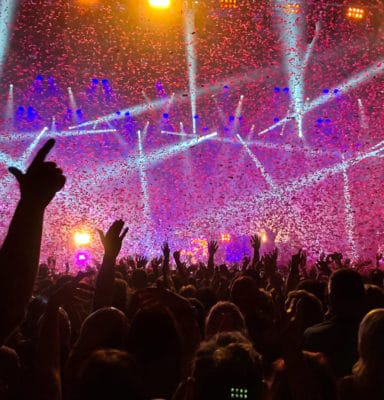Even though the technology landscape has changed much since the introduction of the PC in 1981, have you ever considered the rapidity of this change and how it might evolve in the meetings industry?
Here’s a quick look at the last 30 years of technology used at meetings and events:
1983. Most presentations were carried out in a dark room with an overhead projector and transparencies which were typed or handwritten. To change out the slide, someone (usually the speaker) had to take the current transparency down and put a new one up. Attendees took notes on the presentation and submitted a typewritten report back to management. When attendees arrived at the meeting, they were given large unwieldy conference binders. Email was being used a little for communications but event planners relied mainly on direct mail and telephone calls to confirm and register attendees. Face-to-face meetings were well-attended and often three or more days in length.
1993. PowerPoint presentation equipment replaced the overhead projector and transparencies. Laptop PCs were becoming more available. Emails and websites were used for communication, but direct mail and telephone calls were still the mainstay for communicating with attendees. Face-to-Face meetings were growing and as more airline brands were being introduced due to deregulation, air transportation could be justified for national meetings.
2003. PowerPoint was the most used method for presentations by far with Laptop, LCD Projector and Screen Rental as the typical AV bundle. Websites and Blogs were mainstay with most organizations. Email had taken over as the more preferred method of communication versus direct mail. Online registration was prevalent. Cell phones were becoming more of the norm, but they were just being used for telephone calls and limited texting. Face-to-face meetings were doing well, but with the introduction of reasonably priced video conferencing, smaller meetings were considering this as an alternative for travel.
2013. While presentation services audio visual equipment is still being used, laptops are replaced with tablets, old LCD Projectors with newer ones, and screen rentals are being replaced with Plasma HDTV and Video Wall Rentals. Event organizers rent iPads so attendees have all the data in one location including speaker presentations, sponsor information and note taking capability. Social channels, such as Facebook, LinkedIn and Twitter are the more prevalent way to communicate with attendees. Email campaigns are still in use, but direct mail and telephone follow-up are pretty much dead. Smartphones contain data plans so texting and social posting is part of the norm. No more dark rooms…attendees want to see and interact with one another and drive the conference takeaways. Face-to-face meetings are still important for driving interactivity of attendees and subject matter depth but are competing with hybrid options and webinars.
